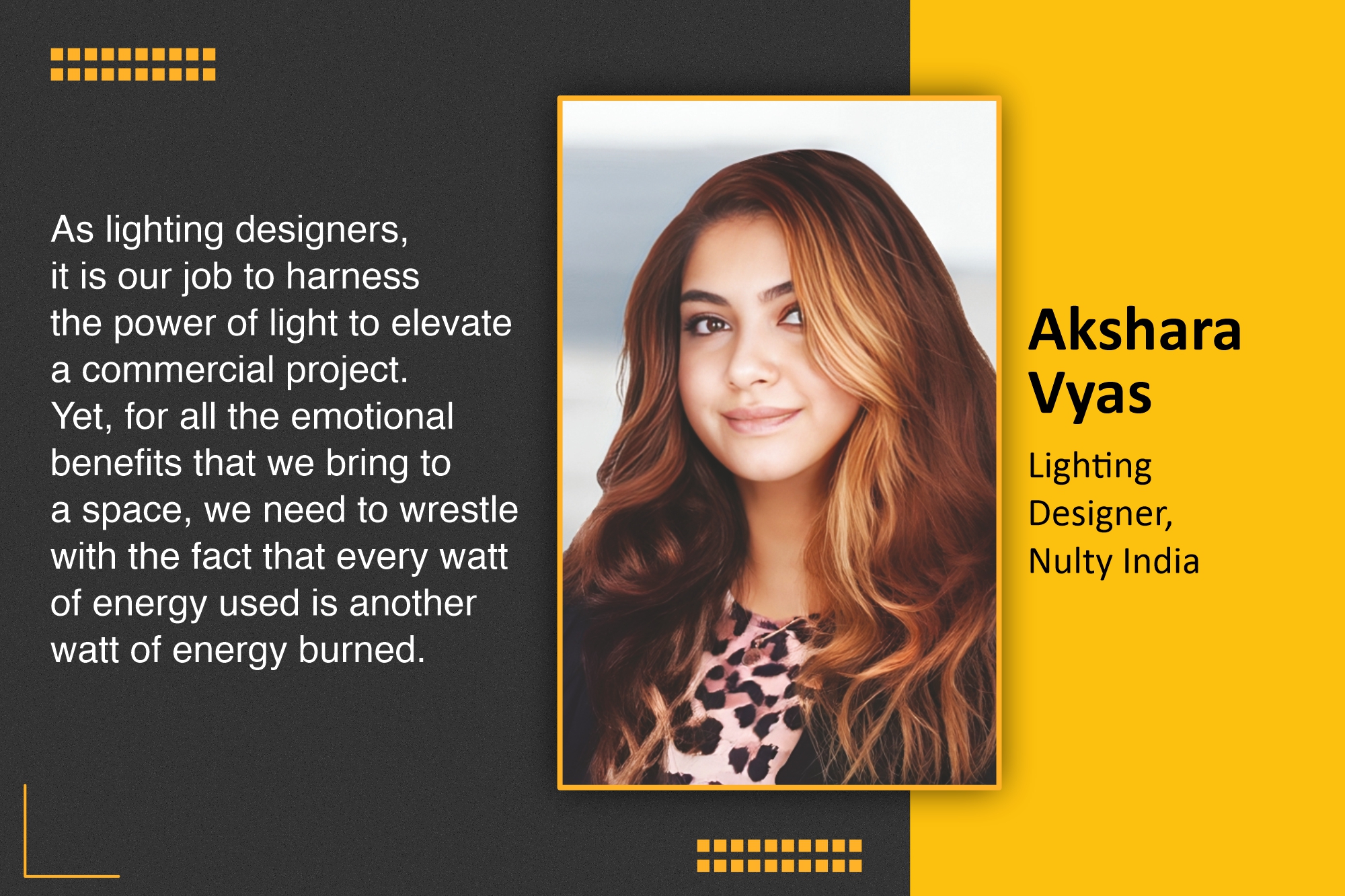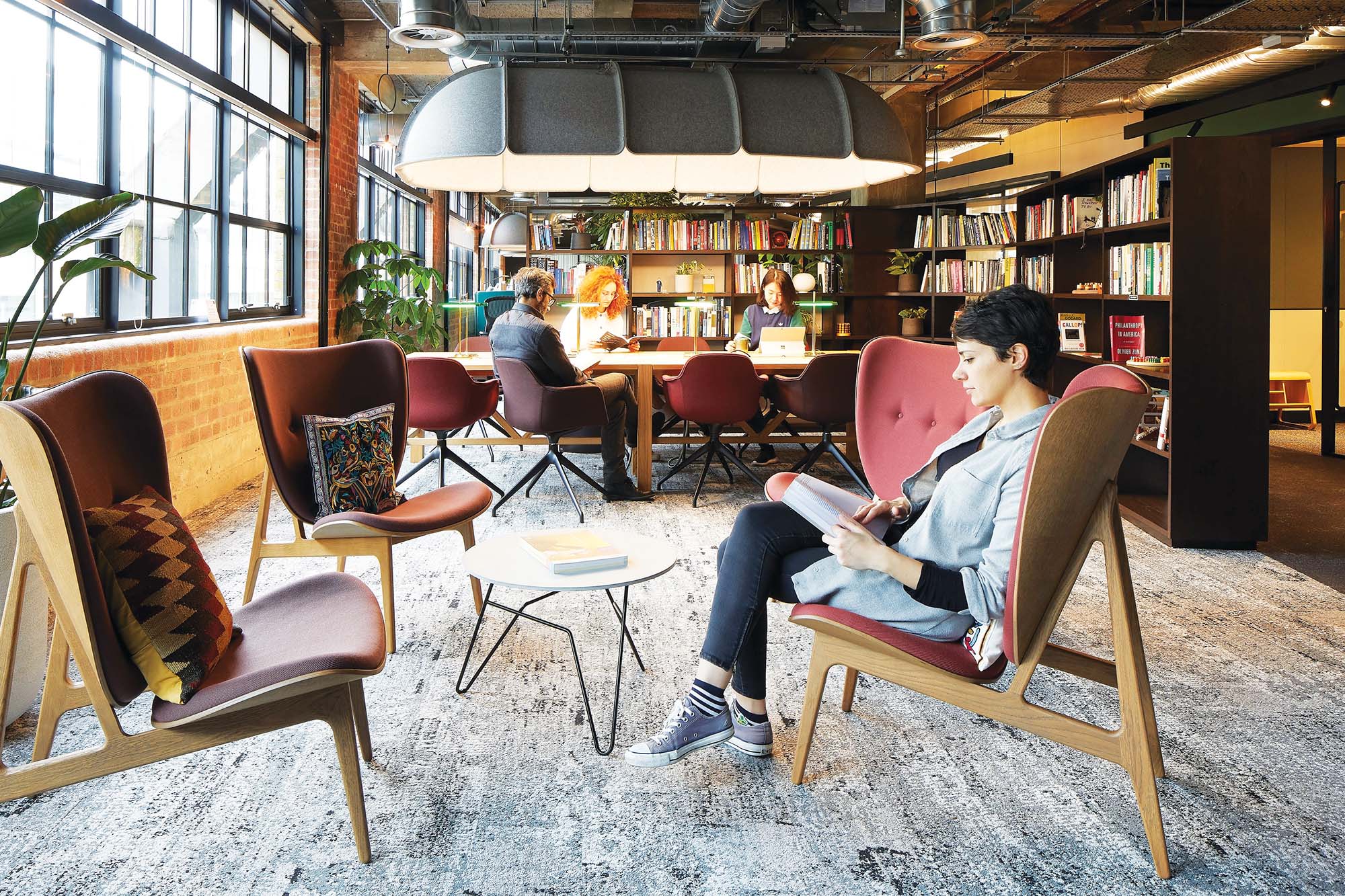The right light, in the right place, at the right time

As we strive to use light to produce more engaging and appealing workspaces, comfort, well-being, and functionality have become some of the core principles that shape the lighting design process. But, energy reduction, along with circularity and carbon reduction, has become an important sustainability goal. It is thus imperative to adopt more thoughtful and conscious lighting strategies without compromising on performance, visual comfort, and aesthetics.
Light for light’s sake
Before we move onto the role that technology can play in reducing energy consumption, the one simple step that we can implement is minimising the number of light fittings on a project. Rather than adhering to a certain lux level, lighting designers should focus on quality rather than the quantity of light. Not everything needs to be illuminated!
Low-wattage and high-efficiency luminaires
Modern LED fixtures, with enhanced lumen per watt metrics, provide substantial energy savings compared to traditional halogen and fluorescent lamps. LEDs consume up to 80 percent less energy, while offering longer lifespans. In an office environment, replacing fluorescent troffers with high-performance LED luminaires can significantly reduce energy consumption and improve visual comfort. It is a big step forward, but energy-efficient design goes beyond maximising lumen output (lm/W) and requires a holistic approach that considers everything from luminaire selection to control capabilities.

Presence and absence detection sensors
Occupancy sensors, including Passive Infrared (PIR), are essential for reducing unnecessary energy usage, ensuring that lights are only active when spaces are occupied. In a large workplace, for example, integrating PIR sensors within an open-plan lighting scheme can optimise energy usage effectively without the need for manual intervention.
Enhanced lighting control
Timers and dimmers are an effective means to reduce unnecessary energy usage and operational costs, while daylight harvesting that uses sensors to measure natural light levels can automatically dim down artificial light levels to optimise brightness while conserving energy. Integrating a more advanced lighting control system with a building management system can also ensure alignment of lighting with a centralised network, which allows for real-time monitoring and a more efficient solution.
Sustainability goes beyond a singular focus on energy efficiency
While low-wattage LEDs, dimming capabilities, and advanced controls play a critical role in reducing energy consumption, a successful design must prioritise the quality of light. This means that designers must think beyond designing towards a single metric. Energy efficiency is just one facet; visual comfort, glare control, vertical illumination, layered lighting, and thoughtful consideration of correlated colour temperature (CCT) and colour rendering index (CRI) are all essential for creating well-balanced spaces. Finally, it is also significant to question whether the standards mandated for commercial spaces, such as the requirement that you need 500 lx on a desk, go far enough. Using fewer light fittings is arguably the most efficient thing that light designers can do to reduce energy usage—workplace schemes will be all the better!
For more details, visit: https://www.nultylighting.co.uk/
Cookie Consent
We use cookies to personalize your experience. By continuing to visit this website you agree to our Terms & Conditions, Privacy Policy and Cookie Policy.










